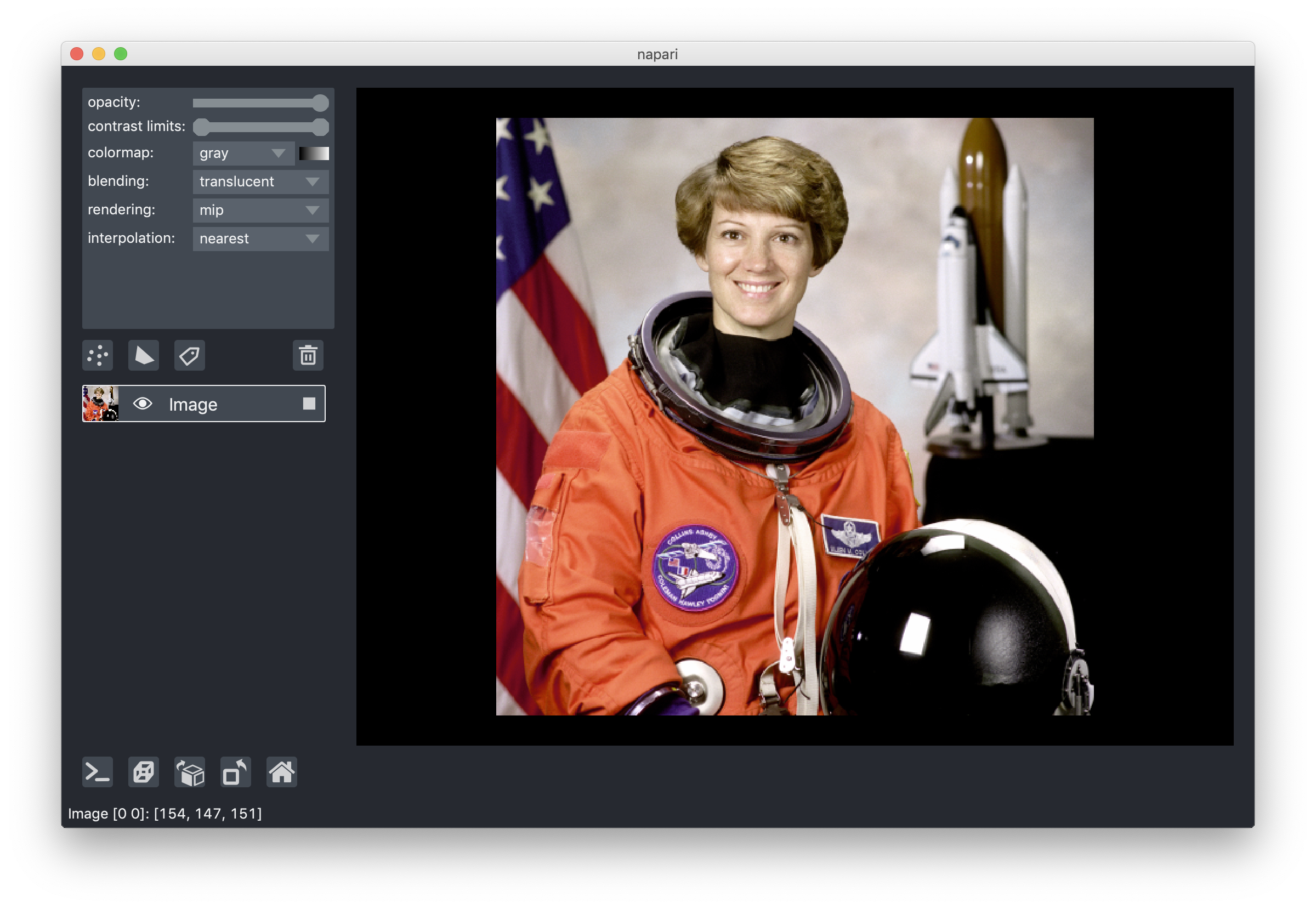napari is a fast, interactive, multi-dimensional image viewer for Python. It's designed for browsing, annotating, and analyzing large multi-dimensional images. It's built on top of Qt (for the GUI), vispy (for performant GPU-based rendering), and the scientific Python stack (numpy, scipy).
We're developing napari in the open! But the project is in an alpha stage, and there will still likely be breaking changes with each release. You can follow progress on this repository, test out new versions as we release them, and contribute ideas and code.
We're working on in-depth tutorials, but you can also quickly get started by looking below.
napari can be installed on most macOS and Linux systems with Python 3.6 or 3.7 by calling
$ pip install napariWe're working on improving our Windows support.
To clone the repository locally and install in editable mode use
$ git clone https://github.com/napari/napari.git
$ cd napari
$ pip install -e .For more information see our installation tutorial
From inside an IPython shell (started with ipython --gui=qt) or jupyter notebook (after running a cell with magic command %gui qt) you can open up an interactive viewer by calling
from skimage import data
import napari
viewer = napari.view_image(data.astronaut(), rgb=True)To do the same thing inside a script call
from skimage import data
import napari
with napari.gui_qt():
viewer = napari.view_image(data.astronaut(), rgb=True)Check out the scripts in our examples folder to see some of the functionality we're developing!
napari supports six main different layer types, Image, Labels, Points, Vectors, Shapes, and Surface, each corresponding to a different data type, visualization, and interactivity. You can add multiple layers of different types into the viewer and then start working with them, adjusting their properties.
All our layer types support n-dimensional data and the viewer provides the ability to quickly browse and visualize either 2D or 3D slices of the data.
napari also supports bidirectional communication between the viewer and the Python kernel, which is especially useful when launching from jupyter notebooks or when using our built-in console. Using the console allows you to interactively load and save data from the viewer and control all the features of the viewer programmatically.
You can extend napari using custom shortcuts, key bindings, and mouse functions.
For more details on how to use napari checkout our in-depth tutorials. These are still a work in progress, but we'll be updating them regularly.
We're working on several features, including
- support for multiple linked canvases
- script & macro generation
- a plugin ecosystem for integrating image processing and machine learning tools
See this issue for some of the features on the roadmap for our 0.3 release. Feel free to add comments or ideas!
Contributions are encouraged! Please read our contributing guide to get started. Given that we're in an early stage, you may want to reach out on our Github Issues before jumping in.
napari has a Code of Conduct that should be honored by everyone who participates in the napari community.
We're a community partner on the image.sc forum and all help and support requests should be posted on the forum with the tag napari. We look forward to interacting with you there.







